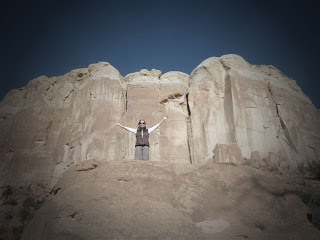 |
| Moonrise over Lanikai Beach, Oahu, HI |
shall I say to mark this ending? How does one
close out a blog?
There are still so many things I want to write
about. So many images and experiences to work with and explore and describe.
But as I've written these posts over the past three months I've had Annie Dillard's The Writing Life echoing in the back of my mind. She goes on and on about taking out sentences and paragraphs, about jettisoning what you think is the best-written part, the key passage, and starting over. Then she quotes Thoreau, who said, "The youth gets together his materials to build a bridge to the moon, or perchance a palace or temple on earth, and at length the middle-aged man concludes to build a wood-shed within them."
Before I began each post I dreamed of writing a bridge to the moon. But now I know it's better to watch the moon and aim for the wood-shed. Even so, perhaps I have written too much. Or not enough about the right things.
I wanted to write about my dog, Sam, and the ways his company during my weeks at home filled my spirit. How he encouraged me to play out back and go on long walks. How his whole face brightens when the neighborhood children run down the hill from the school bus. How he stops for babies. And chases cats. And fetches the paper first thing in the morning. I wish I could have written about him.
I wanted to write about the inspiring women I've seen along my way, women who remind me of the Woman at the Well in her later years. The older, finely-dressed African American woman at a church I visited who held a tambourine in one hand--which she shook throughout the service. The elderly Hispanic woman who sat with her eyes closed in the healing waters of Ojo Caliente, her arms stretched out before her as if in prayer position. Surely these women have lived long enough to see their share of troubles. Yet they struck me as people who have heard and believed some good news along the way. I wish I could have written about them.
 |
| Kilauea Volcano, The Big Island, HI |
But I will save these things for another time and place. Or share them with you, dear readers, in person. And then I will listen to your stories. I will look forward to two-way, personal exchanges.
"For every time there is a season," says Ecclesiastes. My sabbatical season has ended just as the season of Advent has begun. So I will return to church tomorrow to wait for the new birth I know is coming, to anticipate the living promise of a God whose word I have never trusted so much.




















